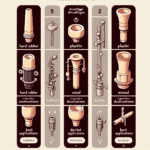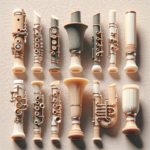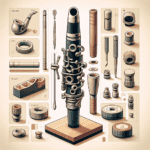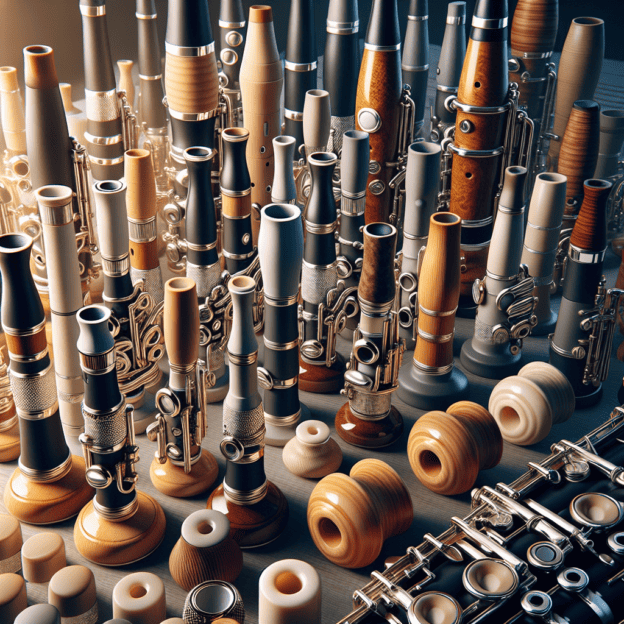Introduction to Clarinet Mouthpiece Materials
When you think about your clarinet sound, you might not immediately consider the clarinet mouthpiece material resonance. But trust me, what your mouthpiece is made of plays a huge role in the overall sound you produce. So, let's chat about the various materials used in clarinet mouthpieces and how they affect your music.
Ebonite Mouthpieces: The Classic Choice
The most common material you'll encounter is ebonite, which is a hard rubber that has been the go-to choice for decades. Ebonite mouthpieces can produce a rich, warm tone, which is why many clarinetists, especially in classical music settings, opt for it. It provides great control and a wide range of dynamics. When you blow into an ebonite mouthpiece, you can almost feel the vibrations resonating, giving you a solid sound with depth. Have you ever noticed an ebonite mouthpiece reflecting even the slightest adjustment in your embouchure? That responsiveness is music to any clarinetist's ears!
Plastic Mouthpieces: Durable and Affordable
Now let's talk about plastic mouthpieces. If you're just starting out, these are often recommended due to their affordability and durability. They might not offer the same warmth as ebonite, but they have their perks. A good plastic mouthpiece is great for classroom settings or marching bands where durability is key. You can drop it, and it won't crack or break, allowing you to focus on playing without the worry of damaging your gear.
| Mouthpiece Material | Tone Quality | Durability | Best For |
|---|---|---|---|
| Ebonite | Rich, warm | Good | Classical music |
| Plastic | Bright, less warm | Excellent | Beginners, marching bands |
| Metal | Bright, cutting | Very good | Jazz, improvisation |
| Wood | Warmest, organic | Requires care | Experienced players seeking unique tone |
Metal Mouthpieces: Bright and Projecting
Here's where it gets interesting—metal mouthpieces! Personal favorites for some players, particularly in jazz, since they can produce a bright, cutting sound that stands out. Metal mouthpieces often resonate differently, providing a unique projection and sound clarity that many love. If you're into improvisation, you might find that a good metal mouthpiece helps your sound carry through a big band or combo.
Wood Mouthpieces: Warm and Organic
But we can't forget about wood mouthpieces. Few clarinetists venture into this territory, primarily due to the maintenance required. Still, they can offer the warmest, most organic sound, akin to a fine violin or cello. The downside? A wood mouthpiece can be sensitive to temperature and humidity changes. If they aren't taken care of, they might warp and lose their character. If you're willing to put in that extra time and effort, a wood mouthpiece can create breathtaking soundscapes!
Choosing the Right Mouthpiece Material
So, how do you choose the right mouthpiece material for you? Start by thinking about the sound you want to achieve. What genre do you play? Ebonites for classical, plastics for versatility, metals for jazz, and woods for a notable richness. Don't hesitate to experiment! Often local music stores will allow you to test them out, and it can be eye-opening! Remember, it's not just about how it sounds, but how it feels too. Comfort is as important as tone!
When choosing, consider the tip opening, facing length, and the material itself. Each factor contributes to your sound and overall playability. Too wide a tip opening and you may struggle with control; too narrow and it might feel restricting. Finding that sweet spot in mouthpiece specifications can significantly improve your playing.
Martin Freres Mouthpieces
And let's touch back on Martin Freres. Their mouthpieces are crafted with precision, embodying an understanding of resonance and playability that's hard to match. Their legacy speaks volumes about their commitment to craftsmanship, ensuring that each mouthpiece meets refined standards. If you desire that special spark in your sound, exploring the Martin Freres range could lead you to what you've been searching for.
Conclusion
In conclusion, the material of your clarinet mouthpiece is more than just a choice—it's an essential aspect of your clarinet adventure. Whether you lean toward the classic embrace of ebonite, the practicality of plastic, the brightness of metal, or the warmth of wood, always remember: your mouthpiece can make or break your sound. Explore, experiment, and enjoy the journey of finding your ultimate clarinet mouthpiece!







